Key takeaways:
- Compliance culture should prioritize shared responsibility and engagement over just rule-following, fostering trust and accountability within teams.
- A strong compliance framework mitigates risks, enhances safety, and promotes a culture of continuous improvement, ultimately impacting an organization’s reputation.
- Compliance can drive sustainability by encouraging greener practices and prompting innovative solutions that benefit both the environment and organizational goals.
- Effective compliance strategies involve fostering transparency, collaboration, and leveraging technology to streamline processes and enhance overall efficiency.
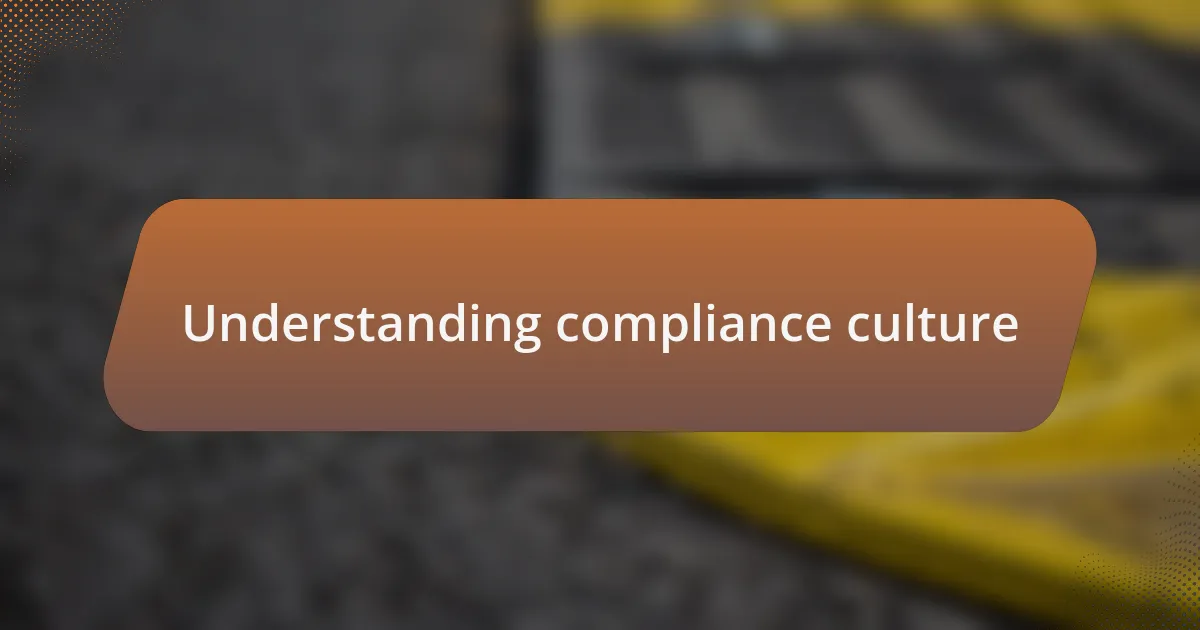
Understanding compliance culture
Understanding compliance culture is essential for fostering a workplace that prioritizes ethical behavior and regulatory adherence. From my own experience, I’ve seen organizations thrive when compliance is treated as a core value rather than just a checklist. What if our approach to compliance wasn’t just about following rules but about cultivating a shared responsibility among all employees?
I remember working in a manufacturing facility where compliance training felt more like a lecture than a meaningful conversation. As a result, many employees disengaged, thinking it was just another box to tick. This highlights how compliance culture should be interactive and relatable—how can companies create a culture where employees genuinely appreciate the importance of ethical standards?
I believe a strong compliance culture engages everyone from the top down. It’s not just about rules; it’s about trust and accountability. When I see teams taking initiative because they understand not just the “what” but the “why,” it reinforces my belief that compliance, when embraced, can drive innovation and sustainability. Isn’t it time we viewed compliance as an opportunity rather than a burden?
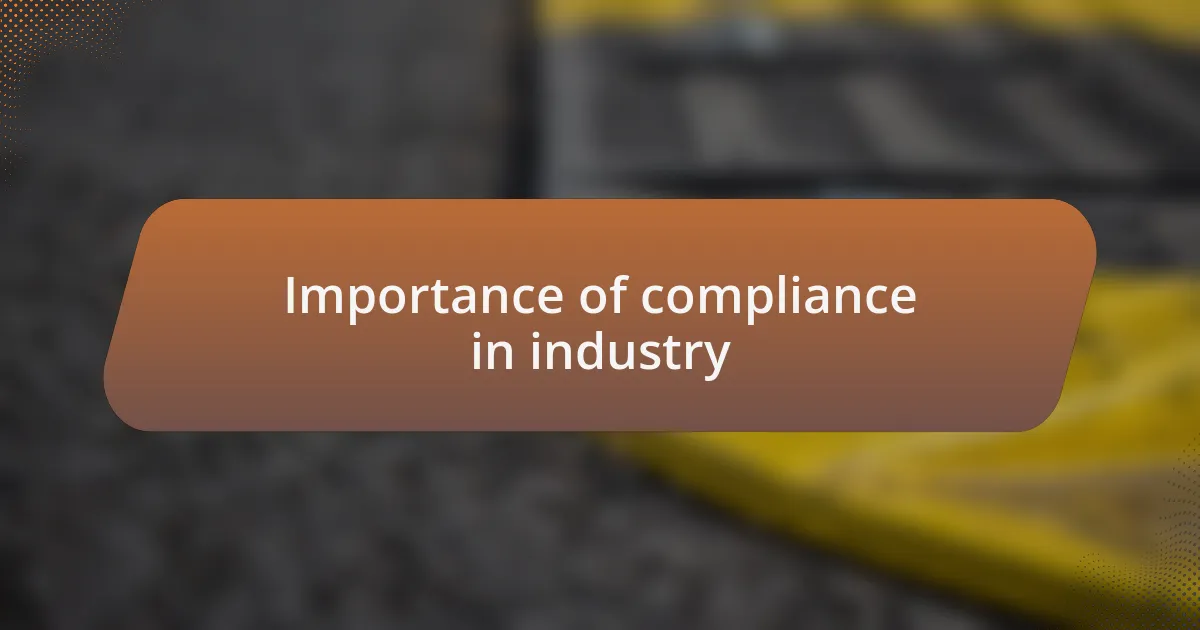
Importance of compliance in industry
Compliance in industry is vital for maintaining integrity and safety standards. In my career, I’ve witnessed firsthand how a solid compliance framework can mitigate risks. Once, during an audit, our team identified a potential safety violation that could have led to serious accidents. Proactively addressing it reinforced my belief that compliance isn’t merely a regulatory requirement; it’s a lifeline that protects both employees and the organization.
Additionally, I find it fascinating how compliance fosters a culture of continuous improvement. In one organization I was part of, transparent compliance practices encouraged employees to voice concerns without fear. As a result, we implemented changes that not only improved safety but also enhanced overall efficiency. Isn’t it remarkable how compliance can transform the workplace dynamic?
Moreover, regulatory compliance has a significant impact on an organization’s reputation. I recall a company that faced public backlash due to a minor compliance oversight. This incident served as a wake-up call, demonstrating how crucial it is for industries to prioritize compliance to maintain stakeholder trust. It’s a reminder that, in our interconnected world, how we handle compliance directly influences how we’re perceived.
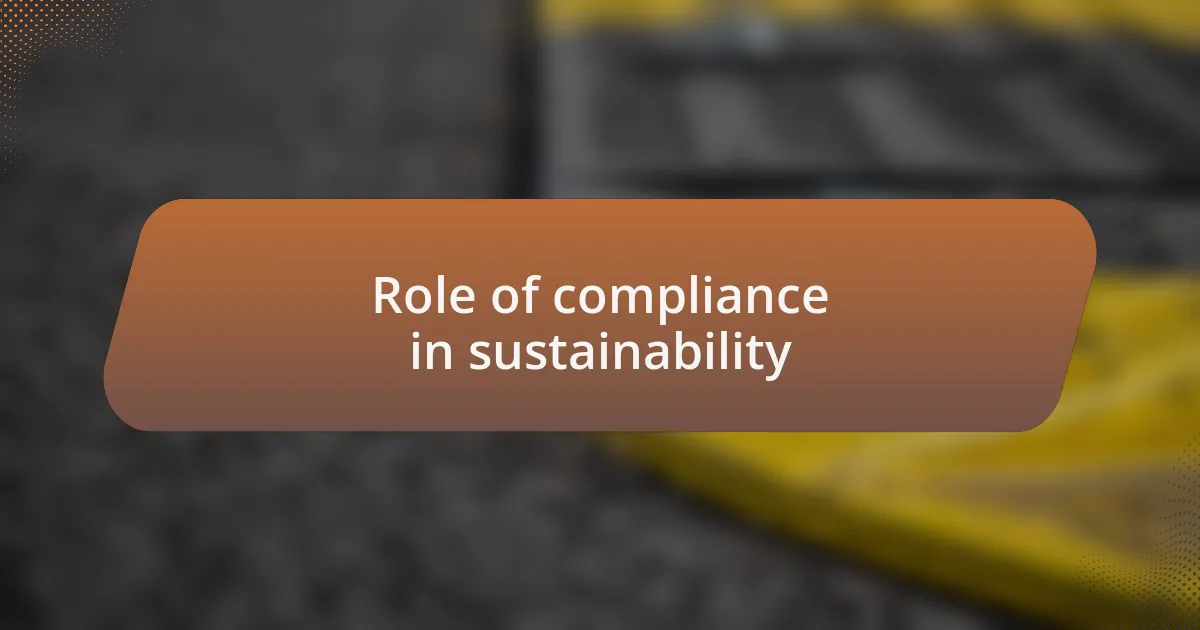
Role of compliance in sustainability
Compliance plays a pivotal role in driving sustainability initiatives within industries. I remember a project where we needed to align our operations with environmental regulations. The process of ensuring compliance not only pushed us to adopt greener practices but also sparked conversations among team members about our ecological footprint. It was eye-opening to realize how compliance could act as a catalyst for sustainability.
In my experience, compliance isn’t just about adhering to rules; it’s about embedding a mindset focused on sustainable practices. There was a time when a supplier of ours struggled to meet compliance standards, leading to the re-evaluation of our sourcing strategies. This challenge forced us to look for alternative suppliers who could not only comply with requirements but also align better with our sustainability goals. It made me appreciate how such decisions can influence the whole supply chain, fostering a more sustainable ecosystem.
Moreover, embracing compliance can lead to innovative solutions that benefit the environment. I once participated in a workshop where regulatory requirements prompted us to brainstorm new approaches to reduce waste. It was inspiring to witness how compliance guidelines not only outlined what we couldn’t do but also encouraged us to think creatively about what we could. How often do we overlook the potential for innovation that compliance can unlock? This reflects my strong belief that compliance and sustainability are interconnected, urging us to continually seek improvement.
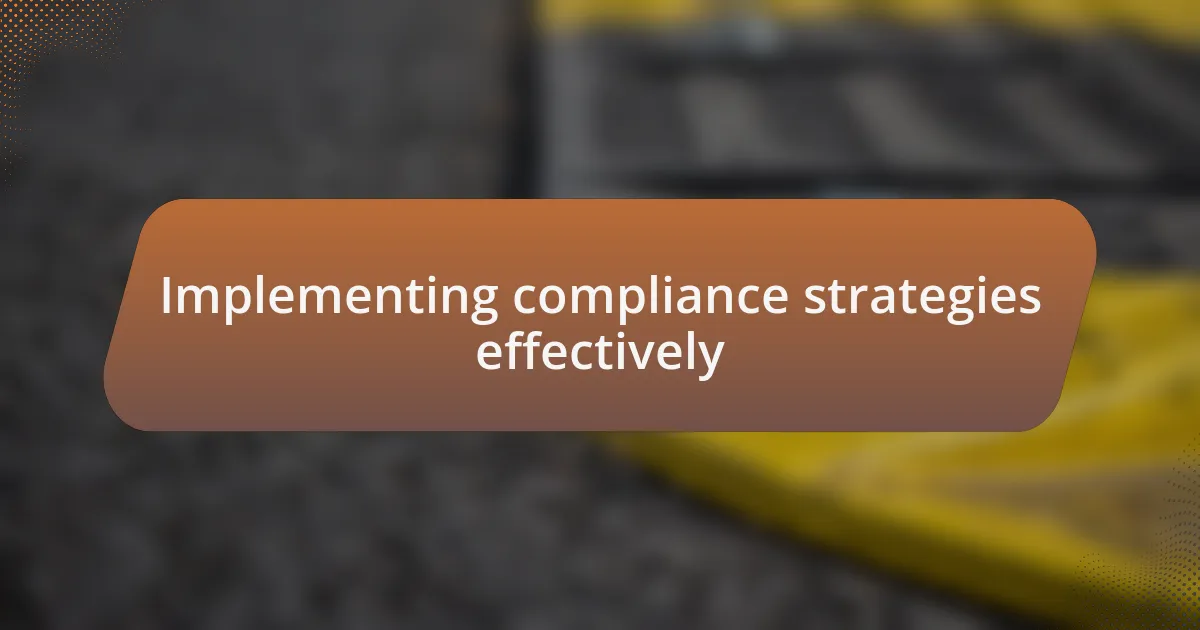
Implementing compliance strategies effectively
When implementing compliance strategies, it’s essential to foster an organizational culture that values transparency and accountability. I recall a time when our team held weekly meetings to discuss compliance updates. This open dialogue not only kept everyone informed but also built a shared sense of responsibility, making compliance a collective goal rather than just a checklist. Have you ever thought about how much more effective compliance can be when everyone is on board?
In my view, training is a cornerstone of effective compliance implementation. I once coordinated a training session that brought together employees from various departments. The discussions we had revealed misconceptions about regulations that were limiting our compliance efforts. It was a lightbulb moment for many, leading to greater collaboration and a newfound enthusiasm for integrating compliance into daily operations.
Moreover, leveraging technology can streamline compliance strategies significantly. I remember when we adopted a compliance management software that automated tracking and reporting. This not only saved us time but also provided real-time insights into our compliance status. It made me realize how technology can transform compliance from a daunting task into a more manageable and even strategic aspect of our operations. Isn’t it exciting to think about the possibilities technology opens up for enhancing sustainability through compliance?
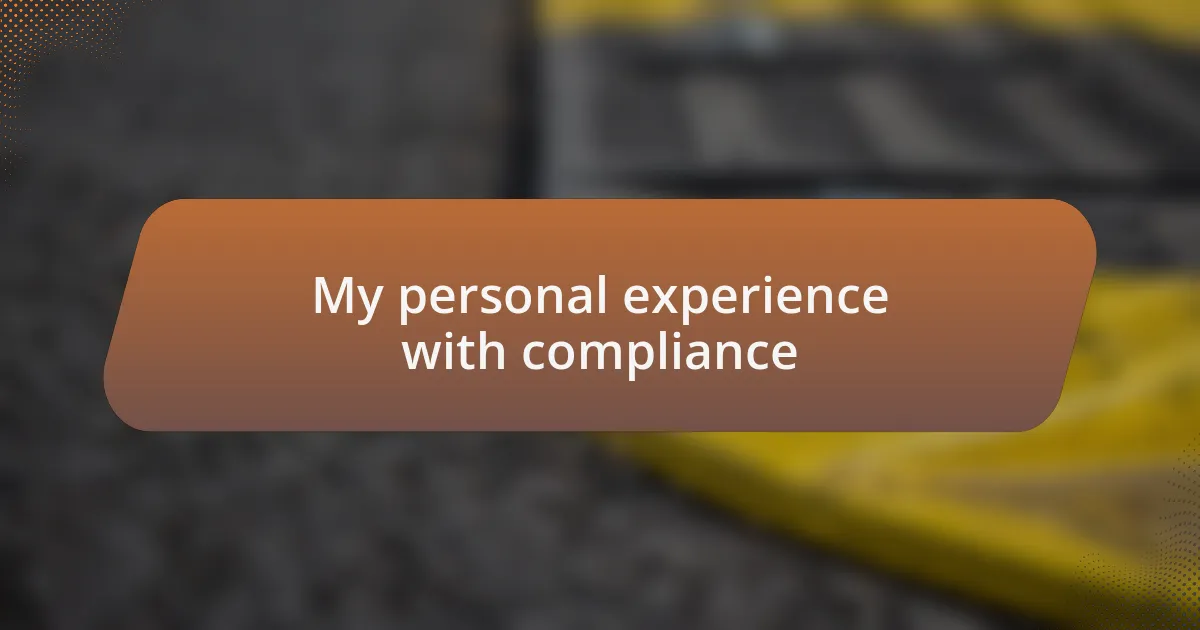
My personal experience with compliance
Compliance has often felt like a double-edged sword in my experience. I remember a challenging project where we had to navigate complex environmental regulations. The pressure to meet compliance goals was intense, yet it pushed me to learn far more than I anticipated. I found myself diving deep into the regulations, and while it was stressful, it also fueled my passion for ensuring that our practices not only met legal standards but also truly supported sustainability. Has anyone else felt that tension between compliance and genuine environmental integrity?
On another occasion, I witnessed firsthand how compliance can foster unexpected camaraderie. During an audit preparation, our team had to collaborate closely, sharing insights and strategies. It was surprising to see how working towards a common purpose breathed new life into our relationships, turning often siloed departments into a cohesive unit. That moment made me realize that compliance isn’t just about rules; it’s also about building a culture where everyone feels invested. How often do you see that energy unleashed when compliance is embraced as a team effort?
Then there were times when compliance seemed like an insurmountable obstacle to innovation. I distinctly remember pitching a new sustainable project that was initially met with skepticism due to perceived compliance risks. However, as I navigated the regulatory landscape alongside my colleagues, we uncovered pathways that allowed us to proceed. That experience taught me that compliance isn’t always a hindrance—sometimes, it can be a catalyst for creative solutions in sustainability. Has anyone else transformed compliance challenges into innovative opportunities?